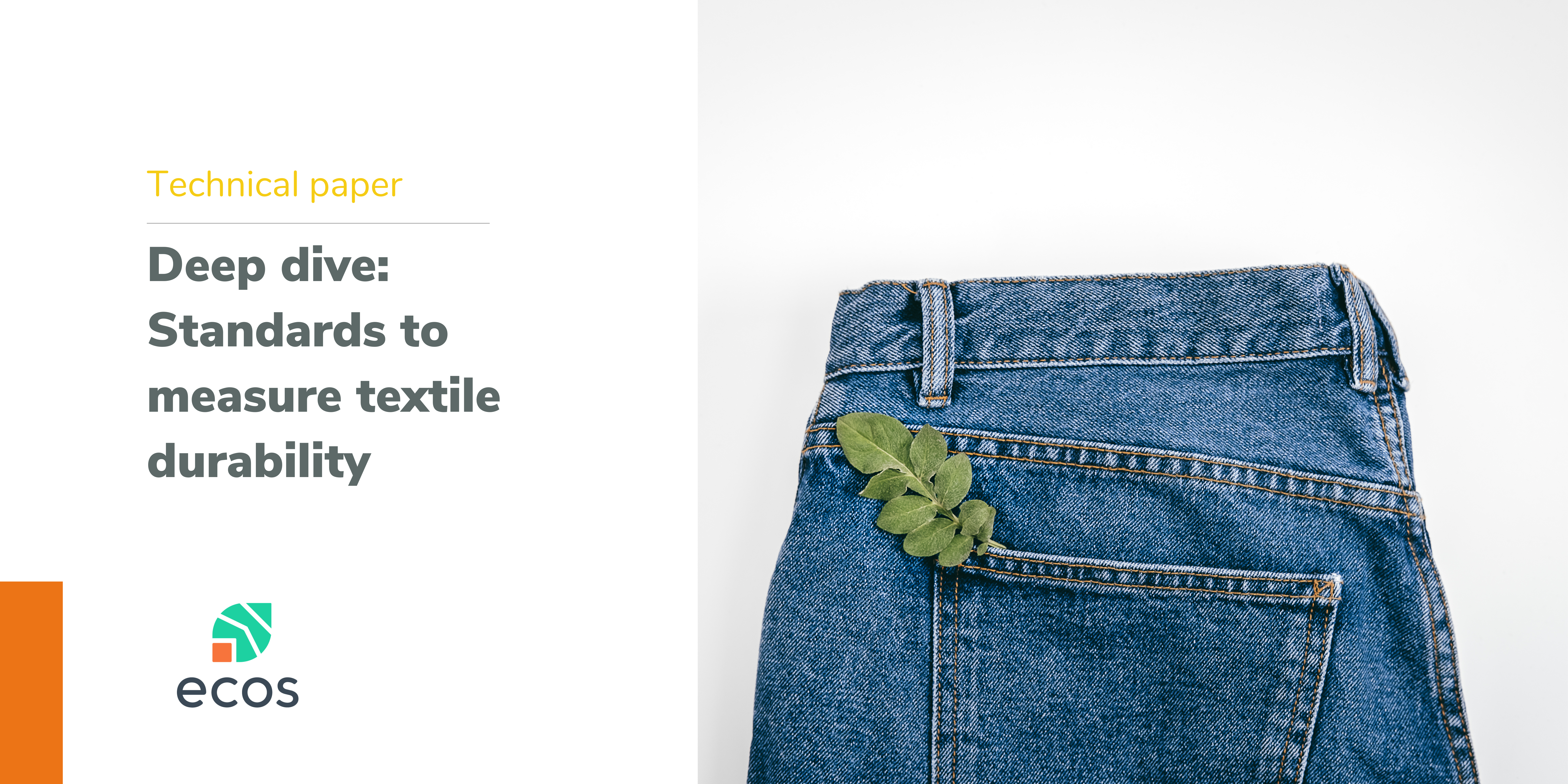REPORT Deep dive: Standards to measure textile durability
In March 2022, the Commission unveiled the EU strategy for sustainable and circular textiles and the Ecodesign for Sustainable Products Regulation. This is a technical paper produced by ECOS investigating and analising which standards and methodologies are used for assessing textile durability.

With these two pieces of legislation – the ESPR and the textile strategy-, the textile sector will be expected to transition towards a climate-neutral, circular economy where products are designed to be more durable, reusable, repairable, recyclable and energy-efficient. It is urgent to turn this vision into action since the climate, social and environmental impacts of the textile sector continue to grow within the current linear system.
This approach should start, first and foremost, with reducing the volume of textile products that are put on the market, bringing production and consumption within planetary boundaries. The ESPR and the textile strategy aim to significantly improve textile products placed on the European market.
This includes setting binding ecodesign requirements targeting the “durability of textile products (covered in this brief); repairability, fibre-to-fibre recyclability, and mandatory recycled content, minimise and track the presence of substances of concern, reduce adverse impacts on climate and environment, microplastic shedding”. At the same time, the European Commission launched the EU strategy for sustainable and circular textiles, which highlights the same characteristics and adds that “failures in quality such as colour fastness, tear strength or the quality of zippers and seams are among the main reasons for consumers to discard textiles”.
Key findings:
- ECOS report identifies the existing standards and methodologies used for measuring some of those characteristics, assessing whether those are robust and fit for purpose to support minimum requirements.
- This technical paper also highlights shortcomings and challenges. Binding minimum requirements coupled with a clear target on reducing resources use have the potential to transform the industry towards the vision set up in the EU initiatives.
- Our briefing describes the most common test methods used for assessing durability; what each method aims to assess; which fabrics are relevant to analyse with the respective test method, and what materials can be assumed to perform better or worse.
- The Annex investigates and compares the use of those test methods in a selection of ISO Type 1 labelling (EU Ecolabel requirement for textiles, Nordic Swan and Blue Angel) to identify the methods they use, the categorisation, and thresholds already available.
It is important to target relevant requirements that can generate the most environmental gains and avoid tradeoffs.
Read the full technical paper HERE.
Download the document

